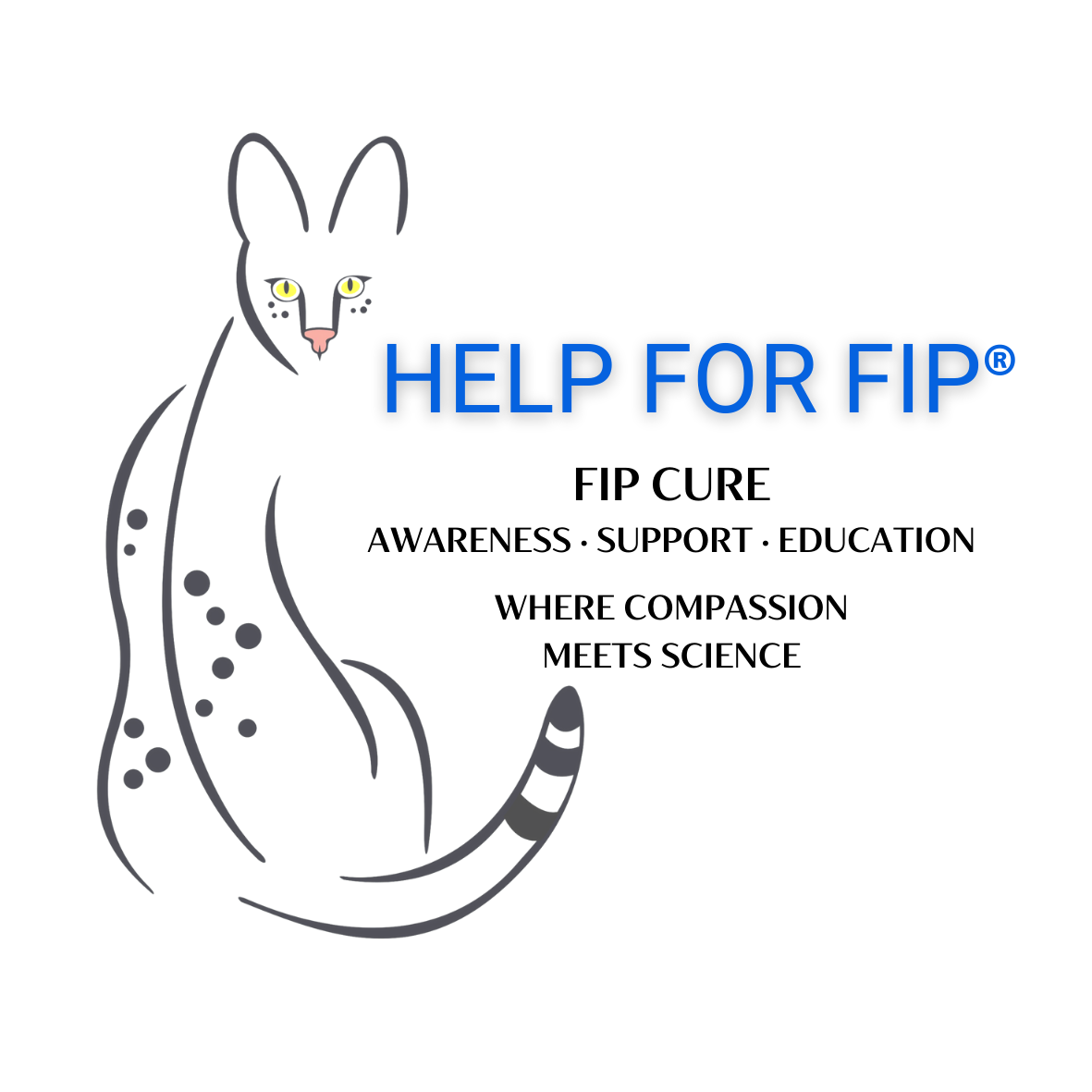A MONUMENTAL TIME IN OUR FIGHT AGAINST FIP by Dr. Niels Pedersen DVM, Professor Emeritus University of California, Davis
A MONUMENTAL TIME IN OUR FIGHT AGAINST FIP
We were hopeful that our collaboration with Gilead Sciences would ultimately lead to an FDA-approved, commercially available antiviral drug treatment for
thousands of cats worldwide dying from FIP each year. We felt that our results from the laboratory and field supported this outcome. Unfortunately, Gilead’s directors concluded at the last minute that something about GS-441524’s use in cats would endanger their ability to get FDA approval for a closely related drug called Remdesivir for humans. Although we strongly pleaded our case for using GS-441524 in veterinary medicine, their decision has remained firm.
I predicted that any delay or inability to get GS-441524 legally approved and marketed would lead to a black market for the drug, most likely from China, where the technology to make and market drugs of all types is quite advanced. With the help of desperate cat groups in the USA and other countries, channels have been created between FIP owners and several Chinese GS-makers. This market has exploded across the world, and there is hardly any country that has not participated. Veterinarians, whose expertise is required to diagnose FIP and help monitor GS treatment properly, were initially reluctant to participate in this black market—the purchase of unlicensed and unapproved drugs by veterinarians conflicts with ethics and practice regulations. However, more and more veterinarians have felt the desperation of cat owners with FIP and seen their willingness to do everything in their power to access this new treatment. Increasing numbers of veterinarians have decided to help treat cats for FIP as long as owners are willing to purchase the drug. As a result of this strange but predictable reality, over 90% of cats treated with GS are cured. Still, the cost is high (as much as $10K with associated veterinary costs), and the treatment is long and not always easy on a cat or owner.
I have resigned that GS-441524 may never be legalized for veterinary use soon. Still, I am unwilling to deny the veterinary use of drugs like GS-441524 and even drugs like Remdesivir if licensed for human use. I have long championed the concept of one medicine/one health, but I am saddened when financial reasons, which always favor humans, threaten this lofty collaboration. Therefore, I have advised cat owners with FIP and their veterinarians to work together and learn how to apply this technology now properly and not years from now when and if these discoveries reach the legal market. FIP is hopefully the first of many viral diseases veterinarians see that will be conquered. Therefore, these FIP discoveries merely open a new door for veterinary medicine.
Is the fight against FIP over? The answer is adamant no! Undoubtedly, safer and more effective antiviral drugs can be developed and legally marketed. Oral drugs like GS are required, sold, and used in the field. We have already seen how antiviral drug treatment has evolved over the last 40 years to control HIV/AIDS and hepatitis C in humans. Nonetheless, it is true that “an ounce of prevention is worth a pound of cure.” We must research better ways to keep and care for unwanted kittens so they are never exposed to FIP in the first place. An effective vaccine for FIP would be extremely useful in lowering disease incidence. However, an effective vaccine can only be developed if we first understand how the FIP virus evades the immune system by infecting only macrophages and how a misdirected immune response by infected macrophages to the virus causes the disease in its various forms. Kitten and cat foster/rescue, formal shelters, and catteries are the primary sources of FIP-affected cats. What are the practices in these environments that increase the incidence of FIP? In the case of catteries, what is the importance of genetic factors in FIP susceptibility?
I have researched FIP since my second year in veterinary school in 1965. The journey to this point has been slow. Part of this slowness is the extreme complexity of how the FIP virus is created and how it causes various disease forms. However, the greatest impediment has been the lack of finances to support a vigorous worldwide research effort. FIP has always taken the back seat to other cats' diseases because it has not been seen (mistakenly) as a model for human disease. I am grateful for the countless individual donations and small grants that funded my FIP research over a half-century. I am slowly fading out of FIP and other research, and I hope that a younger generation will take up all the great challenges that remain in the ultimate conquest of FIP. However, even with all our recent successes, the actual interest in supporting FIP research has declined to even lower levels than ever before. Millions of dollars are now being spent on treating cats for FIP. What should a small portion of those millions be invested in supporting the level of FIP research that is yet required? I would ask those with an emotional or invested interest in FIP to consider supporting organizations like SOCK FIP, the Center for Companion Animal Health at UC Davis, the Bria fund of the Winn Foundation, the Feline Health Center at Cornell, or any such organization or institution involved in FIP research wherever it should exist in the world. The biggest mistake animal lovers can make to assume that all of the answers will come without investment from human disease research has been amply funded by private, corporate, and governmental (taxpayer) money. We have personal experience over the last two years with the fallacy of this belief.
I wish all of you a healthy, happy, and prosperous 2020. -Niels C. Pedersen
